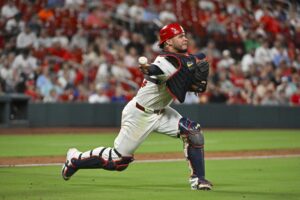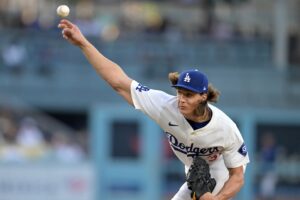Cleveland Indians Season Review
Now that the Cleveland Indians have officially been eliminated from the playoff picture, it’s time to look back at the 2020 regular season. It was a season unlike any other before in MLB history. From the 60-game schedule to the hurdles and obstacles brought forth by the Coronavirus pandemic and everything else in-between. There were scheduling and logistical issues and the Indians handled all of those things tremendously.
Although their pursuits of playing in another World Series fell short, the 2020 regular season was still an important year. Cleveland bid a dew to one of their top starting pitchers in Mike Clevinger, saw breakout years from other pitchers such as Triston McKenzie, and watched a Cy Young season unfold in front of their eyes with the performance of Shane Bieber. Unfortunately, the team also didn’t have their manager Terry Francona for much of the season. Francona was dealing with health issues throughout the season. He ended up managing only a handful of games before being sidelined.
In turn, that gave Sandy Alomar a prime opportunity to demonstrate that he has what it takes to be a manager. It’s something Alomar has been working towards for years and he got to experience it first hand. Whether Alomar ends up being the new manager remains to be seen. Regardless, positive thoughts and prayers to Terry Francona for continued good health.
With all of that being said, let’s take a look at what went right and what went wrong during this abnormal season for the Cleveland Indians.
Pitching Staff Success
As is always the case it seems, pitching was another hallmark of this year’s Indians squad. Collectively, the Indians pitching staff posted an American League best 3.29 ERA over 536 innings of work. At various points, Indians pitchers led all of baseball in ERA, but there was a stretch in August where that trend went downward. As such, that allowed the Los Angeles Dodgers to have the best overall ERA in baseball.
Cleveland Indians Starting Rotation
However, the starting rotation was baseball’s best. The starters concluded the regular season with a 3.17 ERA over 349 and two-thirds innings of work. Furthermore, the rotation finished with an MLB leading 401 strikeouts and had an Opponent Batting Average Against (OBAA) of .222. That was the fourth lowest OBAA among all thirty teams.
The aforementioned Shane Bieber had a historic season that will go down in history. Bieber led baseball with a 1.63 ERA over 77 1/3 innings of work or 12 starts. Bieber is the clear-cut favorite to win the American League Cy Young Award. Beyond Bieber, the aforementioned Triston McKenzie was impactful as well. McKenzie pitched in a total of eight games this season, six of which were starts, and had an 11.3 K/9 rate over that span.
The contributions of right-hander Carlos Carrasco can’t go overlooked, either. After Mike Clevinger was traded, Carrasco moved up in the rotation to the second spot. He also made 12 starts posting a 2.91 ERA and 82 strikeouts over that sample. While his impact was felt on the mound, the leadership he provided off the field and in the clubhouse was just as impactful.
Other key contributors to the rotation were Aaron Civale and Zach Plesac. Civale pitched in his age-25 season and concluded the season with an 8.4 K/9 rate. Although, his ERA of 4.74 was two runs higher than it was in 2019 at 2.34, during his rookie season. As for Plesac, there was plenty of controversy off the field. After breaking team protocols, Plesac spent three weeks at the team’s alternate training site. Even though that happened, he still made eight starts, six of which were quality starts, posting a 2.28 ERA over that span. He also held opposing hitters to a .191 batting average.
Review of the Bullpen
As a group, the Cleveland Indians bullpen finished the regular season with a 3.53 ERA over 186 1/3 innings of work. Overall, that ranked as the fifth best ERA in baseball or the third lowest value in the American League behind the Oakland Athletics and Tampa Bay Rays. Besides that, Cleveland relievers held opposing batters to a .226 average which was the eighth-lowest value in that category among all thirty teams.
The biggest pillar among the unit was closer Brad Hand. Hand ended the year with 16 saves and posted a 2.05 ERA along with a 11.9 K/9 rate over 23 appearances. While Hand started the season in a rough patch, he concluded the year at a phenomenal level. Between August and September, the 30-year old right-hander put up a 1.41 ERA over 19 2/3 innings of work. Off the field, Hand was an important member of the community as well. He was named the team’s Roberto Clemente Award nominee due to his contributions in the Cleveland area.
Looking back at the bullpen, another key contributor was James Karinchak. He pitched in his rookie season in 2020 and put up a 2.27 ERA over 27 appearances. In addition, he was definitely a strikeout machine accumulating a total of 53 strikeouts over that sample.
Impacting Bullpen Acquisition
Finally, Cal Quantrill was another impactful member among Indians relievers in the month of September. Quantrill was part of the six-player package the Indians received for the aforementioned Mike Clevinger. He was originally drafted by the San Diego Padres during the first round of the 2016 Draft. After being acquired by Cleveland, the 25-year old pitched in a total of eight games. Two of those were starts. In that span, he put up a 1.84 ERA with a OBAA of .246.
Looking to the future, Quantrill will be an interesting name to watch. He has the ability to be a starting pitcher and while he struggled in that role for San Diego, Cleveland could view him as a part of their future rotation.
Looking Back at the Lineup
Taking a look back at this season, the biggest struggle for the Cleveland Indians was the offense. At times, the offense clicked as a unit and fired on all cylinders. However, more often than not, the lineup struggled to score runs and more importantly come through in key situations.
The Indians wrapped up the regular season with a .228/.317/.372 slash line. Looking at OPS, they finished with the fourth-lowest number in all of baseball, at .689. Additionally, they scored a total of 248 runs which tied them with the Kansas City Royals for the sixth fewest runs scored among all thirty teams.
Although it looked as though the lineup had sneaky power potential on paper, that did not come true. Beyond that, the lineup hit .240/.330/.441 with runners in scoring position. With that being said, there were some key contributors. Let’s take a look at those individuals below.
1. Jose Ramirez
Third baseman Jose Ramirez had an MVP-caliber season. In fact, he is a legitimate candidate for the AL MVP award. The 28-year old concluded the regular season batting .292/.386/.607. While the lineup struggled with runners in scoring position, Ramirez didn’t. He slashed .345/.422/.836 in those situations. Against lefties, the two-time All Star was very productive posting a .386 batting average along with a 1.407 OPS.
2. Cesar Hernandez
Before last season, the Indians signed Cesar Hernandez to a one-year deal. The reasoning was to give the team a bat for the leadoff spot. Hernandez certainly filled that role leading the team with 66 hits and putting up a .283/.355/.408 slash line over 58 games. In that span, he also hit 20 doubles, three home runs, recorded 20 RBI along with 24 walks, and had 57 strikeouts. Over nine games against the division-rival Chicago White Sox, Hernandez batted .362/.462/.545.
3. Carlos Santana
Every season, it seems as though first baseman Carlos Santana posts and doesn’t get as much recognition as he deserves. While the 2020 season was a down year for Santana, he did lead the American League with 47 walks over 255 plate appearances. During his age-34 season, Santana had a .199 batting average, but did post a .349 on-base percentage. The Indians have a decision to make regarding Santana as he has a $17.5 million dollar team option for next season or a $500,000 dollar buyout.
Outside of those individuals, shortstop Francisco Lindor concluded the regular season with eight home runs and a .750 OPS over 60 games. Overall, it was a down season at the plate for Lindor. Meanwhile, designated hitter Franmil Reyes recorded 69 strikeouts in all, but did have a .344 on-base percentage. At the start of the year, Reyes looked like a potential power threat. Yes, he does have the ability to hit home runs, but the strikeout rate is very high as well as he showed this season.
Cleveland Indians Pivotal Offseason
Now that the 2020 season is in the books, the focus turns to the upcoming offseason for the Cleveland Indians. It is going to be a very important one for the team. One of the biggest decisions for the front office will involve the aforementioned Francisco Lindor. Lindor has been heavily available on the trade market since the July 31st Trade Deadline last season. Given that he has one more guaranteed year remaining, now might be the time for Cleveland to trade him for a nice haul in return.
If Lindor is traded, the Indians would likely want young players in return. Similar to the package that came back for Mike Clevinger. Cleveland might feel as though they have a chance to be competitive again in 2021. However, losing Lindor obviously would be a blow to the lineup. The starting rotation could still carry the team to success next year.
Regardless, the number one goal this offseason needs to be trying to improve the offense. The Indians desperately need an outfield power bat. An argument can be made that they might even need two of those type of players. Whether that comes in a Francisco Lindor trade, another trade, or in the free agent market, is uncertain at this time. It will be interesting to watch how this pivotal offseason plays out for the Indians.
Main Image:
Embed from Getty Images






